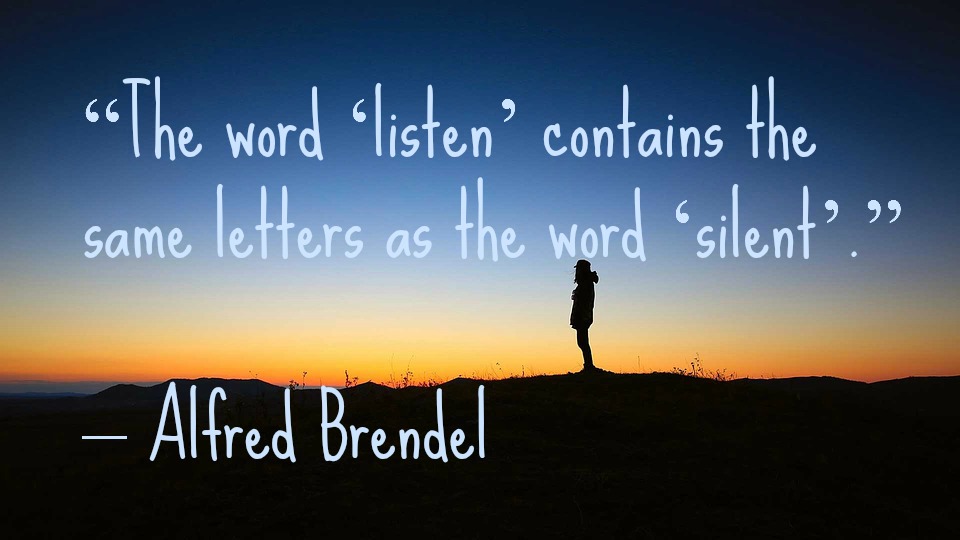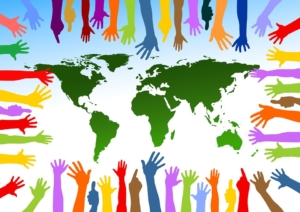Close on the heels of the Olympic Games, I recently found myself contemplating excellence and what that means in today’s world. I discovered, as it turns out, that along with respect and friendship, excellence is one of the Olympics’ three core values, as set forth by the International Olympic Committee. Excellence is an important element of what many consider to be inherent in the athletes who perform “at that level.”
In this edition of Soul Notes, let’s hold in our hearts this notion of excellence.  What, if any, purpose does it serve? Is it a worthy goal, an end state? Or, is it rather a state of being? Is it something to be embodied, rather than pursued? Does it matter? Does embracing excellence (or, its opposite – not embracing it) come with a price? What does it cost, in terms of our serenity, health, or overall well being? What impacts result?
What, if any, purpose does it serve? Is it a worthy goal, an end state? Or, is it rather a state of being? Is it something to be embodied, rather than pursued? Does it matter? Does embracing excellence (or, its opposite – not embracing it) come with a price? What does it cost, in terms of our serenity, health, or overall well being? What impacts result?
FOR THOSE ON A SPIRITUAL PATH
So often we hear the phrase “in the pursuit of excellence.” Is it, however, all about the pursuit? I’d like to challenge each of us to replace that with: embracing excellence. Unlike the pursuit of something, embracing it sounds and is more encompassing, more in the moment, more present, more “now.” Pursuing sounds as if it’s a constant state of grasping for something that’s still out in front of you, almost as if it is something that remains ever oh so slightly beyond your reach. It seems unattainable.
For those on a spiritual path, I would venture to say that it is the embracing of, rather than the pursuing of excellence, that rings true. It’s a setting of an intention that each of us will embody a way of life, of living, that emerges from our highest state of being. It is soul centered, soul activated, soul sustaining. Accordingly, it’s something that, once accessed, can and may be cultivated and developed.
During this season of Northern hemisphere harvesting, it’s a good time to reflect on what each of us has already cultivated with regard to excellence in our lives. Take a few moments to inventory your relationships, work endeavors, wealth signs, health indicators, and the like. Remember, as an excellence “embracer,” you’re simply staying on the path of excellence, nurturing and cultivating it throughout your journey. Survey your life’s stock. Appreciate and celebrate all the fruits of your excellence to date! For those areas that are still germinating and not quite yet ‘in full bloom’ for you, continue to foster their continued growth, regeneration, and renewal.
EXCELLENCE IS A QUALITY
Excellence is not an innate gene or trait. Not unlike integrity, or loyalty, excellence is a quality. It’s a commitment. Embracing it is a choice each of us can make — today, and every day.
Why does embracing excellence matter? I’d say it matters for many of the same reasons we enjoy watching the Olympics! It brings out the best in ourselves, and in others. It motivates. It inspires. It raises us, and others, up.
“Excellence encourages one about life generally; it shows the spiritual wealth of the world.” –George Eliot
Yes, in the Olympics there are medal counts and world records, and pride amongst nations. What we experience when witnessing the various Olympic events, however, runs deeper than that. 
A few brief weeks or even days after the Olympics have ended, many of us do not even remember who placed in what order, and in which particular event. Sure, there are those few standouts, who become household names, who garner multimillion endorsement deals, and who receive the ongoing, related spotlight and ‘stardom’. Or, perhaps a few of the athletes are our personal favorites. We will remember those names.
What we tend to remember most, however, are the MOMENTS. The moments of excellence personified. Individual moments. Team moments. Moments frozen in time. We remember the stories of triumphs, and personal “overcomings.” These are what are emblazened on, and held snugly, in our hearts.
For what end?
Some say excellence means something along the lines of “putting out a high quality product.” This begs the question, of course, of where to draw the line. It discards and leaves behind, without consideration, the notion that excellence is an admirable quality in and of itself. It remains of value – with and without attaining a specific, predetermined outcome. It’s more fluid than that. Excellence in this sense is more in the shape of a circle than in a straight line.
Let’s consider the fourth place finishers at the Olympics, for example. Do they embody excellence any “less” than those who get to stand on the podium as the gold, silver, or bronze medalists?
There are inherent benefits of embracing excellence, within ourselves and in appreciating it when we see it in others. It FEELS GOOD to excel! It feels good to watch others excel! It’s PASSION in MOTION!
For your consideration:
As we close, I leave you with these words, from Nobel laureate, Pearl S. Buck:
“The secret of joy in work is contained in one word – excellence. To know how to do something well is to enjoy it.“
Okay, your turn:
What does excellence mean to you? Is it worth pursuing? Better yet, is it worth embracing in our daily lives? If so, in what way or ways?
I invite you to share your thoughts, feelings, and experiences in the Comments section, below. Soul-to-soul!

 wisdom and principles where they may be of service to each of us living in today’s world, and particularly during this time of an evolving (albeit often challenging!) degree of consciousness.
wisdom and principles where they may be of service to each of us living in today’s world, and particularly during this time of an evolving (albeit often challenging!) degree of consciousness. Keeper of the light(house)
Keeper of the light(house)


 These questions may sound familiar. Do you recall a time when you were asked to speak up, and you didn’t? Or, perhaps you felt the urge to voice your opinion, and you refrained from doing so? Or, how about those times when you started to speak, and then you held yourself back in some way? Often, we may have lots to say, but we withdraw, for fear of being misunderstood, disrespected, or not even truly heard at all.
These questions may sound familiar. Do you recall a time when you were asked to speak up, and you didn’t? Or, perhaps you felt the urge to voice your opinion, and you refrained from doing so? Or, how about those times when you started to speak, and then you held yourself back in some way? Often, we may have lots to say, but we withdraw, for fear of being misunderstood, disrespected, or not even truly heard at all. Last week, we were given the following question to answer and to share. We went around the table, and each of us spoke. The question posed was this: Would you rather drive or fly to Las Vegas? Santa Monica is approximately 280 miles from Las Vegas. It typically takes several hours by car and about 45 minutes in the air by commercial airline.
Last week, we were given the following question to answer and to share. We went around the table, and each of us spoke. The question posed was this: Would you rather drive or fly to Las Vegas? Santa Monica is approximately 280 miles from Las Vegas. It typically takes several hours by car and about 45 minutes in the air by commercial airline. convertible, often with the top down on the car. For us, it was definitely the journey rather than the destination which mattered most. We agreed that we would cover about 850 miles of the Route’s 2300 miles (the full length of Route 66 runs between Los Angeles and Chicago) – and traveled out to Santa Fe, New Mexico and back.
convertible, often with the top down on the car. For us, it was definitely the journey rather than the destination which mattered most. We agreed that we would cover about 850 miles of the Route’s 2300 miles (the full length of Route 66 runs between Los Angeles and Chicago) – and traveled out to Santa Fe, New Mexico and back.
 Visioning helps you access information you may never be able to elicit through a quick ego-centered, mind-centered “checklist.” Visioning involves seeing by connecting to the unseen world. It is a beautiful, spiritual, nonphysical way of seeing – allowing you to gain insights, wisdom and guidance in a way that nourishes your soul. Visioning facilitates decision-making as to which direction to take next in your life, or with regard to a particular challenge, question, or inquiry. It helps propel you forward from a place that feels grounded, inspirational, and authentically YOU! Visioning ensures that your next steps come from a place of alignment, not misalignment. (For a refresher on alignment, and why it’s important in your day-to-day life,
Visioning helps you access information you may never be able to elicit through a quick ego-centered, mind-centered “checklist.” Visioning involves seeing by connecting to the unseen world. It is a beautiful, spiritual, nonphysical way of seeing – allowing you to gain insights, wisdom and guidance in a way that nourishes your soul. Visioning facilitates decision-making as to which direction to take next in your life, or with regard to a particular challenge, question, or inquiry. It helps propel you forward from a place that feels grounded, inspirational, and authentically YOU! Visioning ensures that your next steps come from a place of alignment, not misalignment. (For a refresher on alignment, and why it’s important in your day-to-day life,  For many of us, this weekend is one where we are winding down from our Christmas celebrations and festivities. And for some, December has been a time spent focusing attention on Jesus Christ as the “Prince of Peace.” No matter your affiliation or spiritual tradition, however, I welcome you to explore with me here on the blog, this concept of peace, and of peace stewardship. It’s not of course, limited to a particular religion, or any religion, for that matter.
For many of us, this weekend is one where we are winding down from our Christmas celebrations and festivities. And for some, December has been a time spent focusing attention on Jesus Christ as the “Prince of Peace.” No matter your affiliation or spiritual tradition, however, I welcome you to explore with me here on the blog, this concept of peace, and of peace stewardship. It’s not of course, limited to a particular religion, or any religion, for that matter.
